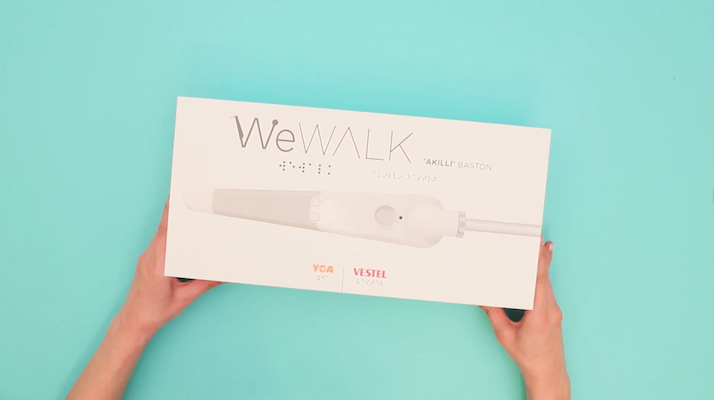
Making sense of some concepts as a blind often requires a different process from that experienced by other people. Chief among these concepts are going somewhere, traveling, and freedom. White cane has an important place in this meaningful journey of understanding them.
I was first introduced to white cane when I was at the school for the blind, but at that time, this introduction didn’t go beyond merely exploring its physical aspect. I mean, white cane for me used to stand for no more than a simple stick which I could use to detect obstacles in front of me and follow pavements. I can’t say it meant more to me until I started university.
At the school for the blind, we wouldn’t usually feel the need for using a white cane because we would know ins and outs of the school building perfectly and get around independently. When we went home, most of us would get help from our families to go from one place to another. At high school, I would go everywhere with the assistance of my friends. When I was in 11th grade, a commuter train line connecting where I lived to the city center opened and that was when I received my first white cane. However, it would usually stay folded because I would not feel like using it.
Everything including my opinion towards white cane changed at the first year of university and it became an integral part of my life. Since that time, I haven’t been separated from my white cane for more that a couple of hours at most. I learned the true meaning of what it meant to use a white cane in those years. Until then, we had only been told about the physical benefits of white canes and hadn’t known how its social aspect had been influencing our lives.
At university, I was able to go anywhere I wanted without needing assistance or asking my friends for help. I learned how I could come up with solutions to problems on my own.
This is the point after which people start to become truly individuals because only then can they feel the freedom to go wherever they want or choose to leave somewhere they don’t like. Unfortunately, blind people who don’t use white cane cannot sometimes ask themselves the question, “do I want to be here?” Moreover, with the help of white cane other people can now see that we are not dependent on them, and social relationships can be built on a healthier foundation.
I have extensively traveled first inside İstanbul and then Turkey from end to end ever since I got a white cane, my closest travel companion. I went abroad for the first time all on my own and lived through all these experiences as an independent youth with passion and excitement. For example, I toured the Black Sea by hitchhiking alone. I went to London to do an internship at BBC which was an educating experience as a whole and I visited cities near London at weekends. The BBC turned one of my travels into a documentary to explain how a visually impaired can travel alone. I hope to keep traveling and exploring the world in the future and I cannot imagine achieving this dream without having my white cane.
In addition to a white cane, I started to utilize different assistive technologies. The smart phone I constantly use is one of my most helpful assistive tools after my cane. For instance, in London I used the Moovit app to get transit directions and Google Maps to navigate to my destination. Blind Square, a blind-specific GPS app, is one of the most used apps on my phone. Above all, my white cane is my most indispensable mean of independence.
With advancements in technology in recent years, smart phones and white canes have turned into beneficial tools for my independence. I believe visually impaired people who combine these tools, namely white cane and technology, may find that they in fact enjoy traveling alone and it is something they have longed for. This is the reason why I shared my experiences gained at university with visually impaired children through YGA. At YGA, we organized various workshops for visually impaired children to make them see white cane as their natural extension for mobility and emphasized the significance of independent living and mobility. This was also an enjoyable experience for me.
In short, starting to use a white cane is the first step for a visually impaired person to become an individual. I think a blind person should experience this as early as possible. Just as sighted children who cross a street alone for the first time or pick up groceries for their parents on their own experience the taste of freedom, blind children experience a similar thrill and excitement when they go out alone with their white canes for the first time. No one should be deprived of this feeling of freedom.
Yunus Tarık


